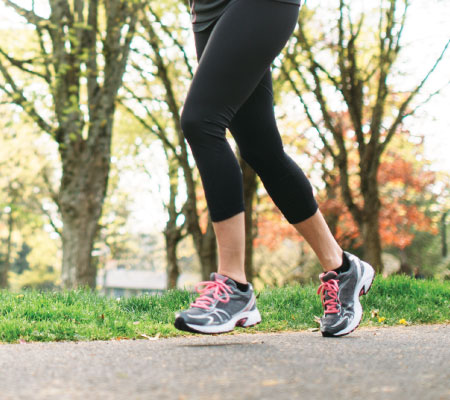
Regular exercise and making sure you get enough Vitamin D may help prevent or delay osteoporosis.
Low bone density and osteoporosis affect nearly 44 million Americans.
Osteoporosis is often called a pediatric disease with geriatric consequences. This is because the foundation for the disease begins in childhood, but its symptoms are not felt until later in life. Forming the right habits early in life can help avoid complications from osteoporosis later in life.
Diet and exercise are important
Eating a healthy diet with plenty of calcium can help keep bones strong. Regular exercise and making sure you get enough Vitamin D also may help prevent or delay osteoporosis. In addition, avoid smoking and excessive alcohol consumption as these have been identified as risk factors for osteoporosis.
Dr. Allyson Mayeux, an internal medicine physician at Marshfield Clinic, said regular screenings for osteoporosis are important.
“Screenings should be a regular part of our approach to patients just like using a mammogram when it’s called for or screening our patients for alcohol and tobacco use,” Mayeux said. “It’s important to identify issues as early as we can.”
Most screenings start at age 65 for women and 70 for men without certain risk factors such as smoking, diabetes or family history of osteoporosis or hip fracture.
Symptoms and risk factors
To determine if you have osteoporosis, your provider may order a bone density test. This will show whether or not you have lost bone mass.
Mayeux said symptoms of osteoporosis can include loss of height, back pain, a bent over posture and fractures. However, most forms of osteoporosis have no symptoms at all. Women are much more likely than men to develop osteoporosis. In addition, as women age, their risk for osteoporosis increases. A family history of osteoporosis or of a fragility fracture, such as a hip fracture, also puts you at greater risk for developing the disease.
Treating osteoporosis and calculating your risk
Certain medications can help you manage your osteoporosis. Modifying your diet to include more calcium and appropriate Vitamin D, and doing weight-bearing exercises also can help.
Men and women over age 45 can calculate their risk of a bone fracture at American Bone Health’s website.
If you’re concerned about your bone health, talk with your care team.
Related bone health stories on Shine365
Kids’ exercise: The key to building better bones
Osteoporosis: Not just for women
Yoga may help build bones, prevent osteoporosis
Bone density scans help reduce fracture risk


Why isn’t vitamin D tested routinely for people with osteoporosis?
Hi Nancy, Checking vitamin D is a typical practice for bone health and osteoporosis clinics. For instance, the Bone Health and Osteoporosis Clinic at Marshfield Medical Center checks vitamin D on all patients as part of the consultation unless another provider has checked it recently. The test is only covered by insurance and Medicare if ordered for specific reasons which are delineated on the Medicare guidelines information. Vitamin D is important in assuring adequate response to therapy. Also, some patients taking additional vitamin D for other reasons have been found to have high vitamin D levels. Both too much and too little vitamin D can have a negative effect on bone health. -Thanks, Jordan